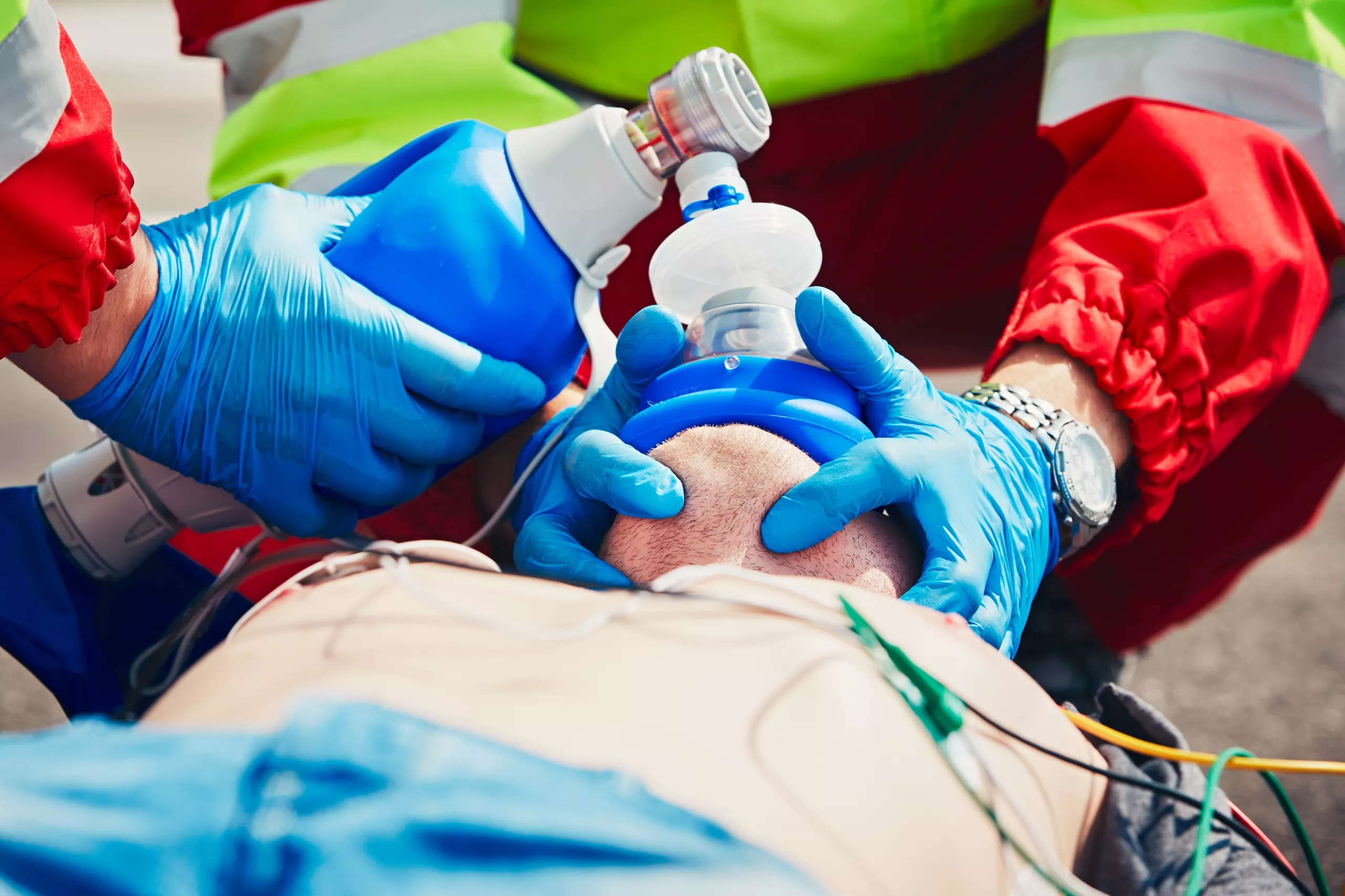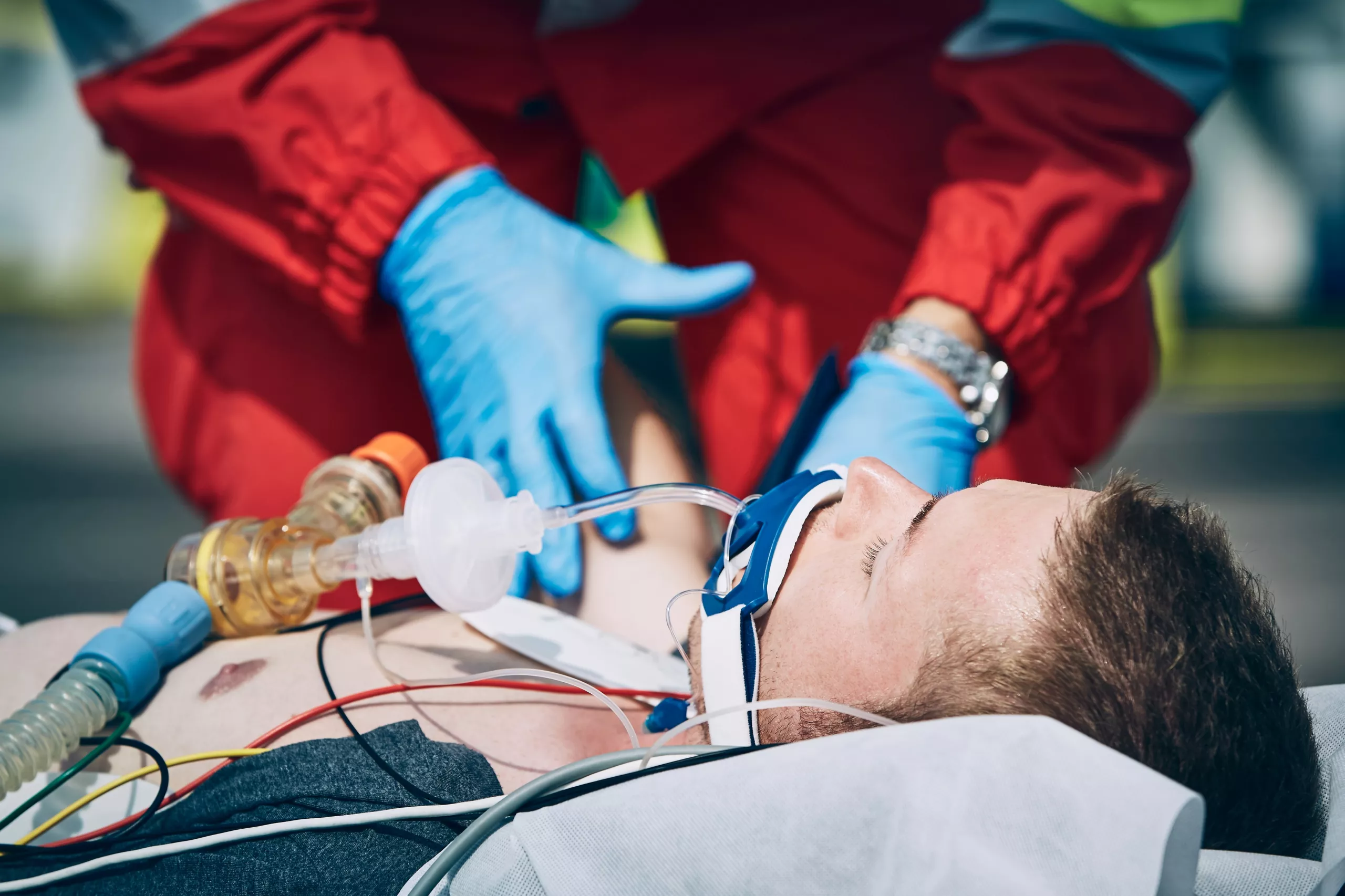When we breathe, the process goes largely unnoticed. But what exactly causes us to breathe in and breathe out? What causes us to inhale and what causes us to exhale? When does the body know when to breathe faster and/or deeper and when to breathe slower and more shallow? To understand these questions, we must first look at the not only the mechanics of spontaneous ventilation but also the factors that regulate it.
Inhalation or “breathing in” is mostly controlled by the diaphragm with a little bit of help from the accessory muscles. It isn’t until we are experiencing dyspnea or “difficulty breathing” that the accessory muscles really begin to have a profound effect on the process. As the diaphragm contracts and the centerline drops below the level of the xiphoid process, the pressure within the lungs drops due to the increased surface area. This negative intrathoracic pressure not only pulls ambient, outside air into the airway and the lungs but also indirectly pulls blood from the venous side of the circulation into the right atrium. Once the pressure between the atmosphere and the inner lungs equalizes, inhalation stops and exhalation begins.
Exhalation is largely passive as the diaphragm stops contracting and begins to return to to it’s normal position. This causes the pressure within the lungs to be higher than the outside atmospheric pressure thereby forcing the inhaled air out of the lungs. This process occurs behind the scenes with very little voluntary control.
So the next question is: what causes us to breathe in and what causes us to breathe out? The apneuistic center, located in the lower portion of the pons of the brain not only stimulates the inhalation process but also the intensity of the inhalation. The pons is stimulated in most human beings when the CO2 (Carbon Dioxide) level in the in the blood, CSF and respiratory centers in the brain becomes elevated and we inhale. Once the pressure is equalized between the lung cavity and the atmosphere reach equilibrium, the pneumotaxic center of the brain kicks in The pneumotaxic centers in the upper pons, do not actually stimulate exhalation, they merely shut off the active inhalation phase and allow passive exhalation to occur. This is one reason that the normal exhalation phase takes longer than the inhalation phase does.
The term “apneuistic breathing pattern” means there is a prolonged, gasping inhalation phase followed by a very short, often ineffective exhalation phase. This often results in air trapping in the lungs as all the inhaled air cannot adequately and effectively escape. A “pneumotaxic breathing pattern” on the other hand, has a very short, ineffective inhalation phase. This results in very little air being inhaled, so the exhalatory volume is very low. Neurological insults often result in irregular breathing patterns like Cheyne-Stokes, Apneuistic, Biots and Central Neurogenic Hyperventilation breathing patterns. This is usually a result of pressure on the either the apneuistic and/or pneumotaxic centers in the pons of the brain.
These 2 centers of the brain work not only work together but also work against one another to deliver the stimulus to regulate the volume and rate of both inhaling air and exhaling air. When they work together, everything is as it should be and our breathing pattern will match our metabolic demand. When things go wrong, this can often lead to overall cellular hypoxic states that can result in metabolic acidosis and eventually death if not recognized and corrected.


